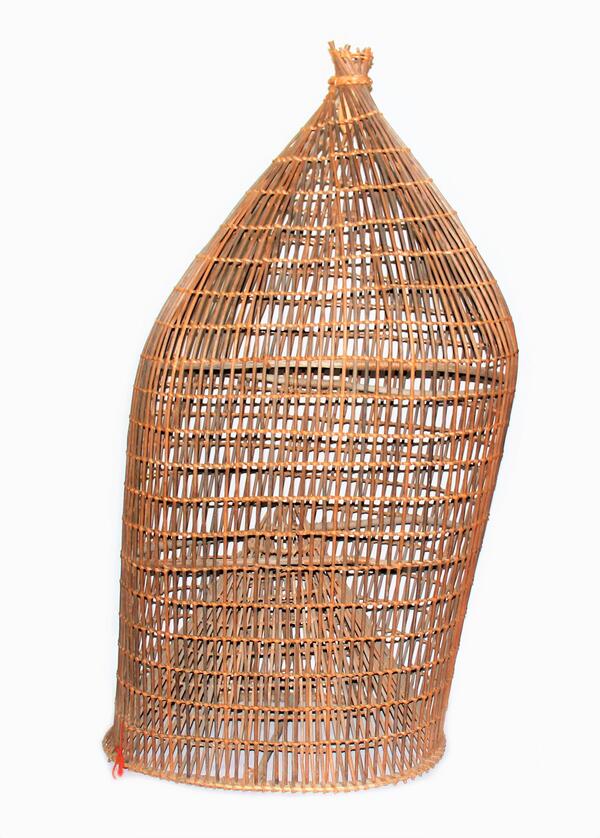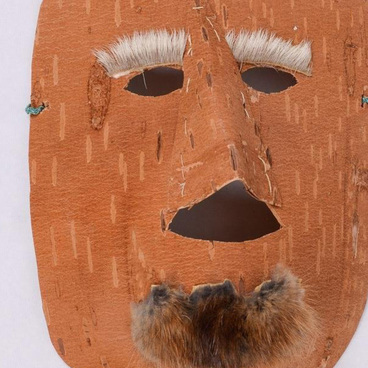The Khanty fished in large and small rivers, oxbows, lakes and channels. The fish was eaten raw, boiled, salted, baked or smoked over the charcoal. Flour was made from dried fish, and glue was made from its entrails.
The importance of fishing for the Salym and Yugan Khanty cannot be underestimated. For residents of the areas around the Salym River, this is the main occupation, while for the Yugan Khanty, hunting and reindeer herding are the high priority.
The Khanty more often than not used passive fishing methods, e.g. with the help of traps. Researchers have established that the method of traps (also called blocking fishing) existed in the Neolithic era. Perhaps, the ancestors of the Ob-Ugrians began to use blocking fences by analogy with fences for hunting elk, which had appeared much earlier. Researchers have identified more than 200 variants of fish traps among the Ugrians.
A blocking fence was placed anywhere in the river, but preference was given to flow channels, places of confluence of rivers or influx of rivers into lakes. There were sacred prohibitions on blocking off a large river, and rivers with strong currents could not be blocked either.
Any blocking fence is a construction made of rods or poles. It was placed across a river, flow channel, lake source, that is, any place where a fish run was expected. In the fence, gaps were made in which wicker fish traps were placed. The traps could be triggered on their own, and some were closed forcibly using special devices.
Among the Khanty people, closed basket-type traps woven from pine shingles were widespread — they were called “morda”. Researchers believe that this type of a fish trap appeared already in the 3rd and 2nd millennia BC.
Conifers were used to make a morda trap. They do not absorb water, so the trap can last for several seasons. One large morda required about 120 shingles of old straight resinous pine. They were fixed with boiled cedar root. Now, a wire is used for this.
It takes more than two days to weave one morda. The morda consists of a base, a carcass, and an insertion bar. The shape and size of the trap depended on where and when it was placed and what kind of fish one wanted to catch. The catch was taken out through a special lattice door at the top of the trap. The morda trap was used where nets were useless, e.g. in snaggy places and dense grass.
The importance of fishing for the Salym and Yugan Khanty cannot be underestimated. For residents of the areas around the Salym River, this is the main occupation, while for the Yugan Khanty, hunting and reindeer herding are the high priority.
The Khanty more often than not used passive fishing methods, e.g. with the help of traps. Researchers have established that the method of traps (also called blocking fishing) existed in the Neolithic era. Perhaps, the ancestors of the Ob-Ugrians began to use blocking fences by analogy with fences for hunting elk, which had appeared much earlier. Researchers have identified more than 200 variants of fish traps among the Ugrians.
A blocking fence was placed anywhere in the river, but preference was given to flow channels, places of confluence of rivers or influx of rivers into lakes. There were sacred prohibitions on blocking off a large river, and rivers with strong currents could not be blocked either.
Any blocking fence is a construction made of rods or poles. It was placed across a river, flow channel, lake source, that is, any place where a fish run was expected. In the fence, gaps were made in which wicker fish traps were placed. The traps could be triggered on their own, and some were closed forcibly using special devices.
Among the Khanty people, closed basket-type traps woven from pine shingles were widespread — they were called “morda”. Researchers believe that this type of a fish trap appeared already in the 3rd and 2nd millennia BC.
Conifers were used to make a morda trap. They do not absorb water, so the trap can last for several seasons. One large morda required about 120 shingles of old straight resinous pine. They were fixed with boiled cedar root. Now, a wire is used for this.
It takes more than two days to weave one morda. The morda consists of a base, a carcass, and an insertion bar. The shape and size of the trap depended on where and when it was placed and what kind of fish one wanted to catch. The catch was taken out through a special lattice door at the top of the trap. The morda trap was used where nets were useless, e.g. in snaggy places and dense grass.



